Outlook strong, but some bumps ahead
Updated: 2014-01-17 09:29
By Li Fangfang (China Daily Europe)
|
|||||||||||
|
Sales of passenger vehicles in China are predicted to experience slower growth this year. Provided to China Daily |
Foreign automakers may face tough battle to retain market share in China, experts say
Passenger vehicle sales are likely to see slower growth this year as more Chinese cities impose purchase restrictions and implement measures to combat pollution, experts say.
The lower projections could not have come at a more inopportune time for the industry, which after virtual stagnation for more than two years and contrary to industry expectations, had reported a double-digit growth in passenger vehicle sales in 2013.
Foreign automakers that have dominated the Chinese market will continue to notch up better numbers in 2014, but may find it difficult to hold on to their rankings, as new regulations and changing customer preferences intensify competition for market share.
A total of 17,183,622 units of cars, sports-utility vehicles, multi-purpose vehicles and minivans were sold in China during 2013, a 17 percent growth from a year earlier, the China Passenger Car Association said in a report released earlier this month.
"It's far higher than government expectations and also played a key role in supporting China's GDP growth rate of over 7.5 percent," says Rao Da, secretary-general of the association.
According to data provided by the association, China's passenger vehicle sales hit new monthly highs in November and December, and took numbers for the full year to 17 million units, and the overall automobile sales past 20 million in 2013.
In December, China's passenger vehicle sales surged 16.2 percent year on year and 11.2 percent from the previous month to 1,814,492 units, it said.
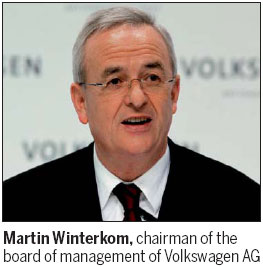
Rao believes the boom will continue in January with an expected 20 percent year-on-year growth in sales. However, purchase limitation policies in more cities, which also increases the vehicle usage costs, will hamper market growth to some extent, he says.
"We expects a more than 12-percent year-on-year market growth for 2014, if there are no major policy changes," Rao says.
Namrita Chow, a senior analyst with the US-based consulting firm IHS Automotive, says that caps on the number of vehicles to be sold will limit the growth in new vehicle sales, although total sales are still forecast to rise significantly in 2014.
"IHS Automotive anticipates stronger growth this year with total light vehicle sales - 76 percent contributed by passenger vehicles - set to rise 11.76 percent year on year to 20.77 million units, and sales rising 9.04 percent on an annual basis in 2014 to 22.65 million units," Chow said in a recent research report.
Part of the reason why experts remain skeptical on full-year sales numbers stems from the growing number of mandates issued by the Chinese government to reduce pollution last year. These include the restrictions on new vehicle sales in first-tier cities.
"The effect, as predicted, will lead to a sudden surge in new vehicles sales prior to the restrictions kicking in. Once the restrictions are in place, there will be a slowdown," Chow says.
Tianjin, the latest city in China to impose purchase curbs, saw a flurry of new vehicle sales in December. The move is expected to reduce the overall growth in new car sales in the city this year, experts say. Tianjin follows other Chinese cities such as Beijing, Shanghai, Guiyang, Shijiazhuang and Guangzhou. More cities facing traffic and environment problems are expected to join the list this year, experts say.
According to China Passenger Car Association's estimates, vehicle sales in Tianjin will be cut by 200,000 units in 2014, while the tighter measures in Beijing will reduce sales by at least 90,000 units from the previous year.
"Combined with the effects of the restrictions on new vehicle sales in cities across China, overall sales will see a slowdown in growth rates, but still clock double-digit growth in the passenger vehicle market as new car buyers will continue to demand vehicles for personal mobility," Chow says.
Andrew Thomson, Asia-Pacific and China head of automotive and a partner at KPMG China, also expresses confidence about China's automotive market in the long run.
"Chinese auto consumers have high expectations and are increasingly keen to have more options available to them in their vehicles, a wide variety of products to choose from and good service from enhanced dealer networks," Thomson says.
"China offers a relative greenfield environment to exploit a wide range of opportunities for auto manufacturers."
According to KPMG's 15th annual Global Automotive Executive Survey, Chinese automakers are set to account for one third of new auto sales worldwide by 2020, with continuing investment in the sector.
The publication, "Strategies for a Fast-Evolving Market", surveyed 200 executives, including automakers, suppliers, dealers, financial service providers, rental companies and mobility service providers, from 28 countries.
"The survey highlights the dynamic and challenging nature of the automotive industry. China continues to be a key focus for almost every original equipment manufacturer, and prospects continue to look bright for the future. Whilst Chinese OEMs continue to make progress, questions remain in respect of their future development," Thomson says.
"Meanwhile, their foreign counterparts will continue to lead the Chinese market. As the auto industry becomes more global, it will be interesting to see who emerges as China's winners and losers."
New ranking
Last year was also a watershed year for the top five global automakers, with changes in the pecking order in China.
Volkswagen AG, the largest automaker in Europe, and the first foreign company to tap the China market, regained its top slot in the domestic market from US rival General Motors, though half of the latter's sales in China was contributed by its unit Wuling minivans.
General Motors overtook Volkswagen to be the top automaker in China in 2005, and had held on to that ranking since then.
In 2013, the combined passenger vehicle sales of Volkswagen and its two joint ventures surged 16.2 percent year on year to 3.27 million units, far ahead of General Motors.
In June, Volkswagen signed an agreement with its local partner SAIC Group to improve their strategic cooperation, expand capacity of the Foshan factory in Guangdong province, and to set up a new plant in Changsha, Hunan province. The agreement was part of the German automaker's plan to invest 9.8 billion euros in China by 2015.
Martin Winterkom, chairman of the board of management of Volkswagen AG, says the company will establish seven new plants in China to boost local production capacity by more than 60 percent to 4 million units by 2018.
General Motors and its joint ventures sold a record 3,160,377 vehicles in China in 2013. The US automaker sold an average of one vehicle every 10 seconds and almost 9,000 each day in China.
"General Motors maintained good growth momentum despite a modest slowdown in demand for commercial vehicles," says Matt Tsien, president of GM China. "We benefited from a broad portfolio of models and brands that cater to the diverse needs of vehicle buyers across China."
The total investment, with its Chinese partners in the joint ventures will reach $11 billion by 2016 in products, factories and skilled labor.
Close on the heels of the top two is South Korea's Hyundai Motor Group. The company sold 1,618,442 units of Hyundai and Kia vehicles to Chinese consumers in 2013 to post a record year-on-year growth of 16 percent.
Japan's Nissan Motor Co took fourth position with sales of more than 1,266,200 units, a 17.2 percent year-on-year growth over 2012.
Toyota Motor Corp, the largest automaker in the world, however, was out of the top five list for the first time as it reported lower sales than that of Ford Motor Co.
The US automaker sold 935,813 vehicles, up by 49.3 percent from a year earlier. Toyota's sales in China increased 9.2 percent to 917,500 units in 2013.
Uncertain times
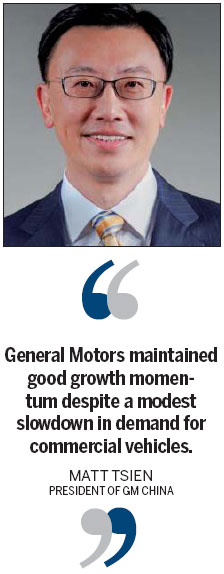
In 2013, Japanese automakers saw their sales increase in China, and recover from the sharp decline in 2012 due to Chinese consumers' anti-Japanese products sentiment caused by the Diaoyu Islands territorial dispute.
However, analysts said that Japanese automakers still face uncertain times in the world's largest automobile market, with less-than-optimistic prospects due to the uncertainties over Sino-Japan relations.
Rao from China Passenger Car Association, however, feels that the sales increase, especially the high double-digit growth in the fourth quarter, "was regardless, as it surged from a extremely low sales base in September 2012, when a dispute over Japan's illegal purchase of the Diaoyu Islands in the East China Sea kept local consumers away from their showrooms".
Statistics from the China Association of Automobile Manufacturers show that in September 2012, Japanese producers' combined sales dived 29.5 percent from August and 40.8 percent from a year earlier.
Japanese automaker Honda has indicated that it does not anticipate any negative fallout in China over Japanese Prime Minister Shinzo Abe's controversial visit to a war shrine. It said it expects to post sales of 900,000 units for 2014, a 19 percent growth from 2013.
Toyota CEO Akio Toyoda had earlier indicated that the company's sales in China would continue to be overshadowed by the poor relationship between the two countries and it would take efforts to offset the impact. Toyota plans to sell 1.1 million vehicles in China this year.
"It's an easily volatile situation where the calm waters can easily be ruffled," says Chow from IHS Automotive.
Cui Dongshu, deputy secretary-general of China Passenger Car Association says that even without the Diaoyu Islands dispute, Japanese automakers would have lost market share to their German and US rivals in China, as "they lacked strategic product offerings in the entry-level segment, as well as presence in lower-tier cities in Central and West China".
To make matters worse, Japanese automakers' dominated markets in South China were hit by the global economic slowdown. "Their market share went down along with the South China automobile market," says Cui.
"If Japanese automakers are not able to develop new products, especially those that can compete with lower-end German and Korean models in the short term, they will find it difficult to bridge the gap in the long term."
lifangfang@chinadaily.com.cn
(China Daily European Weekly 01/17/2014 page22)
Today's Top News
Xi writes to Chinese in German colleges
China software to rival Android
Will China dominate the world?
Mainland policy lures HK students
Obama tells Germans he will not wiretap
Party is over for SOEs conferences
Egypt referendum wins support
Home prices continue to climb
Hot Topics
Lunar probe , China growth forecasts, Emission rules get tougher, China seen through 'colored lens', International board,
Editor's Picks
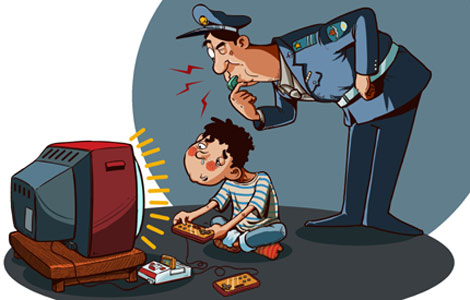
|
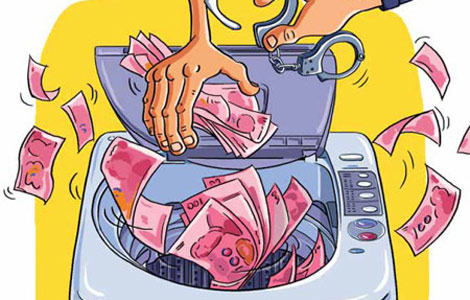
|

|

|

|
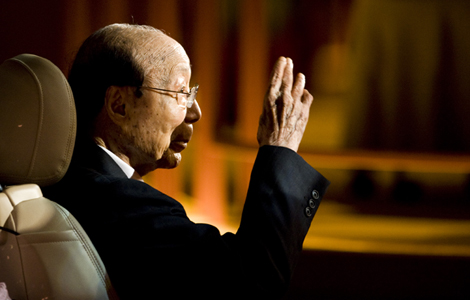
|






